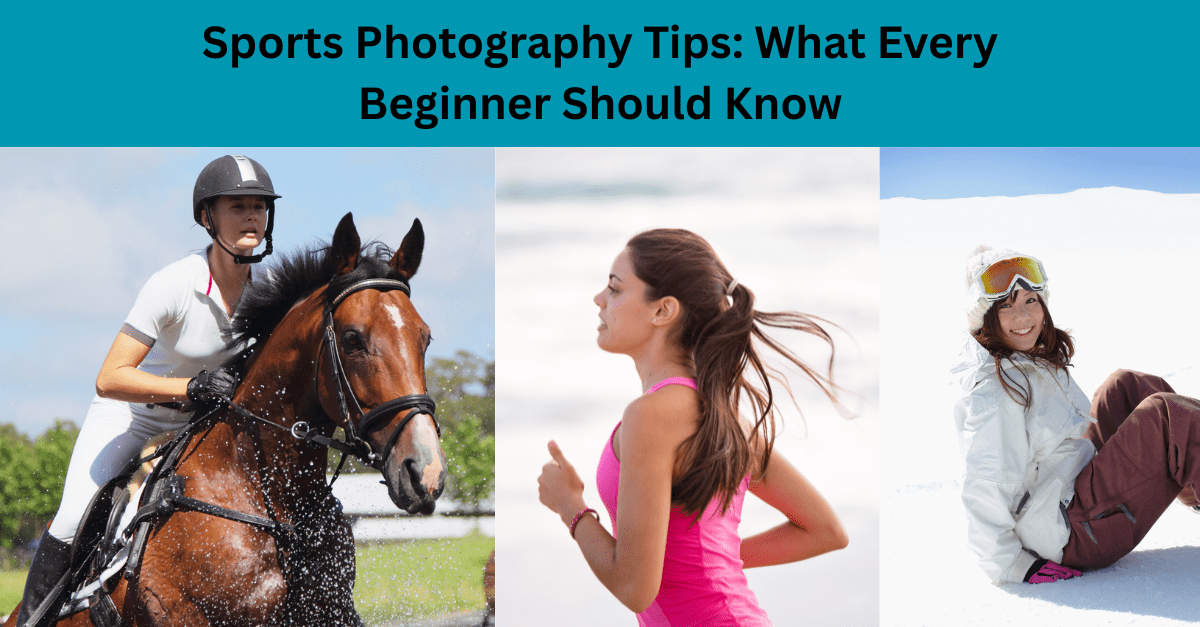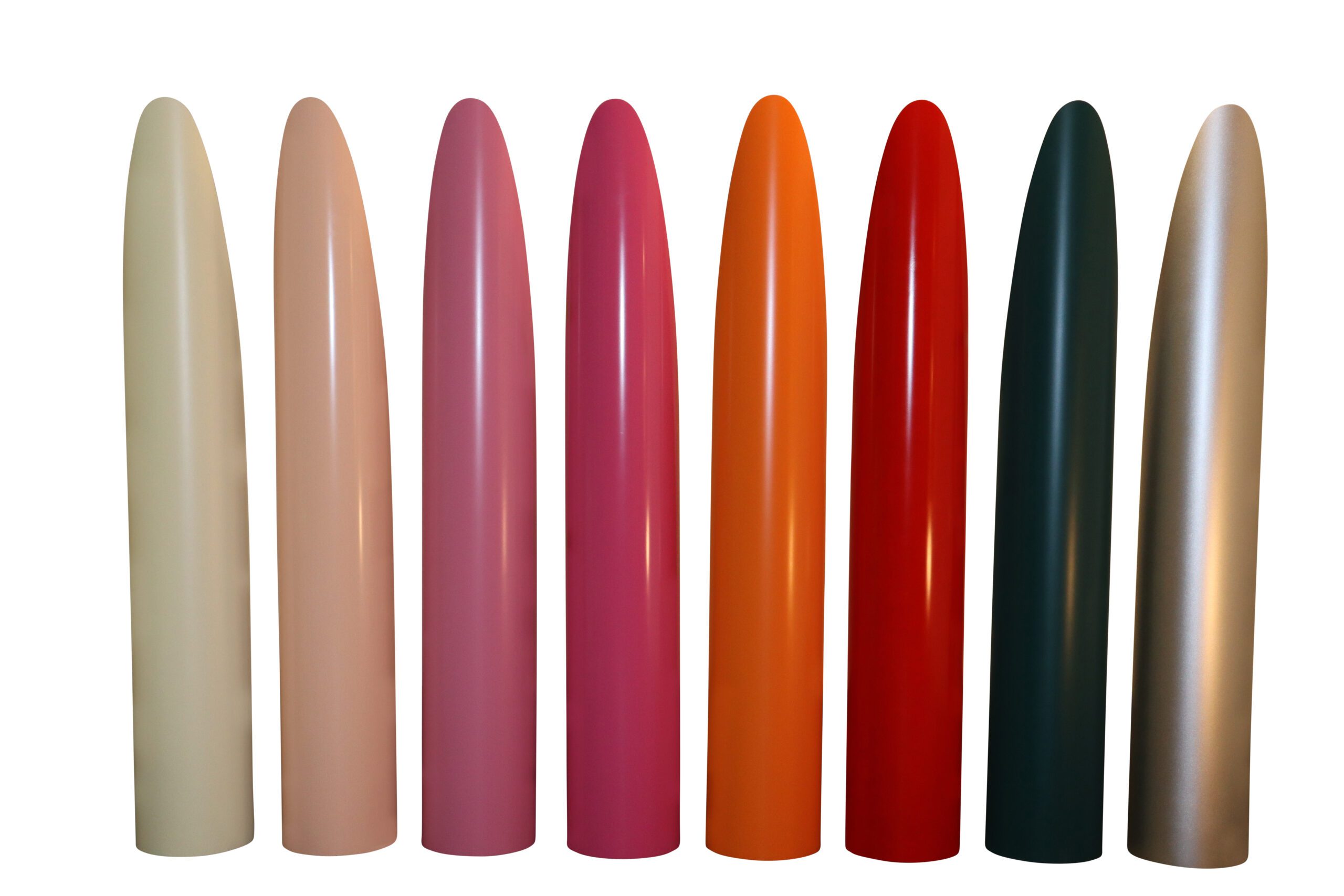Welcome to the world of sports photography! This type of photography can be tough. You will see fast action and things happen that you do not expect. It can be hard to get a good picture at sporting events. But if you get it right, you will have great shots that show a story. You may be a complete sports nerd. Or you may be someone who is just starting to take pictures. This guide is here to help you get into this type of photography. You can turn your love for sporting events into strong photos. Are you ready to start?
What Is Sports Photography?
Sports photography is a type of photography where the focus is on athletes, sports events, and what happens during athletic games. A sports photographer may work for a newspaper, a magazine, or a brand. They shoot from the sidelines at big games or capture moments that happen off the field. Sports photography brings together photojournalism and scenes from everyday life.
The main goal of this type of photography is to catch the drama, feelings, and big moments during sports events. These pictures are very important in sports culture. The photos help people remember famous wins and losses. If you want to start as a sports photographer, you should know what sports photography covers. This is the first thing to learn.
Definition and Key Features of Sports Photographs
The meaning of sports photography is taking pictures of sports as they happen. It means stopping one moment from a quick-moving event, so you get the action just right. To do this well, you need the right techniques and a good feel for the game.
What matters in good sports pictures is the use of fast shutter speed. This helps keep motion blur away. Photographs from sporting events often show big actions. The photos catch the top point of what the athlete is doing. You want these pictures to show lots of energy.
The best pictures in sports show more than just what happens. They tell a story to the people who look at (them. The picture can show feeling, struggle, or winning. Good photos like this make us feel like we are part of the game in that moment.
Why Sports Photography Is Unique
The way things change fast and often in sporting events can be tough for photographers. In a studio, you get to control things, but out on the field, you don’t. You have to be ready all the time and catch the big moment in just a second.
This means you need to have quick reflexes. You also have to guess what will happen next. If you know the rules and some strategies of different sports, you will have a big advantage. This helps you get in the right spot and be set before the play even begins.
Your camera settings help you deal with things that come up suddenly. Get good at using fast shutter speed and make use of continuous focus and other settings. These can help you keep up with the action and take clear photos. Good camera work at sporting events is what shows people the hard work and excitement of sports culture.
The Excitement Behind Capturing Sports Moments
There is something exciting about taking pictures at sporting events. The energy in the games is high, and it spreads to everyone who is there. If you are a photographer, you get to be right in the middle of all the action. Your job is to save those perfect moments in a photo. The challenge is big, but you also get a lot of rewards.
When you catch the perfect moment, like a goal, a crash, or when someone celebrates, it makes you feel good. This is what makes photographers want to do it again. As you take more photos, your hit rate gets better. Every good action shot feels like a win. The joy of snapping that one photo everyone talks about stays with you. Now, let’s see why those action shots are so strong and special.
Action Shots and Their Impact
Action shots show a subject moving. In sports, these photos stop a player in the air, a speeding car, or a ball just as it touches the net. They are what a sports photographer works for.
Getting the perfect moment is everything. Capturing it can turn a normal photo into one everyone remembers. If you shoot a split second earlier or later, you may miss the moment. To have a better hit rate, you need to practice and learn to guess what will happen next.
Sports photographer Tom Jenkins, who has won many awards, took a winning photo at the Grand National steeplechase by being ready. His photo of jockey Nina Carberry flying high as her horse went down shows that being ready and being lucky can help you catch that perfect moment.
Hook Statistics: How Many Sports Photographs Are Taken Each Year?
The number of sports photographs taken at major sporting events is staggering. At a single large event, photo agencies can transmit tens of thousands of images, shot by hundreds of photographers. This highlights the massive demand for high-quality sports content.
Think about the world’s biggest games. The sheer volume of images captured shows how vital photography is to documenting sports history.
| Event | Estimated Photos Transmitted by Major Agencies |
| Super Bowl | Over 10,000 |
| FIFA World Cup Final | Over 15,000 |
| Champions League Final | Over 12,000 |
These numbers demonstrate the rapid growth of sports photography as a profession. With so much action happening, there are countless opportunities for a sports photographer to capture a unique and powerful image.
Beginner’s Guide to Getting Started in Sports Photography
Ready to get started with sports photography? This simple guide gives you a clear way to begin. You do not need to be an expert right away. Start with the basics. Practice when you can. Grow your skills with each new game you shoot. You just need to care about it and want to learn.
We will take you through what you need to know, from picking your camera gear to learning about settings for different sports. Let’s help you find your way to take amazing photos.
Essential Equipment for Beginners
Having the right camera gear can really help the most. You need a camera that keeps up with all the action in sports events. Pick a DSLR or mirrorless camera that has fast focus and a frame rate of at least 6 or 7 pictures each second.
Here is some essential gear to think about:
- A good camera body that focuses fast.
- A zoom lens you can use for shots at different distances.
- A telephoto lens to get close to the action, even if you are far back.
- Extra memory cards that are fast so you do not miss any shots.
Remember to check your battery life! Some sports events can last a long time, so you do not want to miss an important moment because your camera stopped working. If you are just starting, a solid camera body with a zoom lens can help you begin well. This setup is great for hobbyists who want to get into sports photography.
Best Cameras and Lenses for Sports Photographs
When you pick cameras, it helps to look at modern cameras that have good performance. The Canon EOS-1D X series is one that many professionals use because of its speed and how strong it is. Still, there are other camera body choices that give you good autofocus and fast frame rates. These are good for those who are new to photography.
It is good to remember the lens is important too. For field sports, you need a telephoto lens or other long lenses that have a long focal length. This helps when you are far from the action and need to get a closer shot. For courtside games or indoor sports, different lenses like a 70-200mm zoom lens work well and can be used in more ways.
The best thing is to have a camera and lens setup that has fast and sharp autofocus. It also helps if it can track moving things easily. You want long-range performance, which will let you take close and clear shots even if you are far back or in the stands.
Must-Have Accessories for Shooting Sports Events
Beyond your camera and lenses, there are a few key accessories that can make your life at sporting events much easier. These extra items help you be more comfortable, keep your things neat, and be ready for anything.
Think about adding these things to your camera bag:
- A monopod to keep your camera steady and stop your arms from getting tired.
- Extra batteries to make sure your camera has enough battery life for the whole sporting event.
- High-capacity memory cards so you do not run out of space when you use burst shooting.
- A rain cover to save all your gear from bad weather.
Every one of these simple tools helps with a common problem. A monopod is lighter and easier to move with than a tripod. Extra batteries can be very helpful, so you can shoot all day. If you get better, you might want to use remote cameras, too. Having all the right gear lets you keep your focus on taking photos of the action, not worrying about missing any of it.
Step-by-Step Guide to Your First Sports Photoshoot
Are you getting ready for your first sports photoshoot? This easy guide is here for someone new. Stick to the steps and these tips will help you feel well-prepared and sure about taking great action shots.
When you go to your first few sporting events, keep things simple. Try to learn and practice as you go. You do not have to get the perfect shot each time. Let’s look at how you can do this.
Step 1: Choose the Sport and Location
Start by picking a sport that you have interest in or you know well. Tom Jenkins, who is a photographer, says, “Passion for the sport comes first.” If you understand the sport, you will find it easier to know when the best moments are about to happen. Local sporting events are a good choice to start with.
Try looking for events that are easy to get to. These can be high school games, martial arts matches, or a local marathon. At these events, you can get much closer to the action. You will likely not need a special pass. So, you can get lots of practice without big pressure.
When you get to the sporting event, take some time to look around. Find the spots where you can stand and see the big moments. See where the background is neat. Move around if you need to. The best angle for a shot might change as the action moves.
This way, you will get better at snapping photos at sporting events. Remember what Tom Jenkins said. It is good to start with high school sports or martial arts if you want to learn more.
Step 2: Learn Camera Settings for Fast Action
Your camera settings be key to getting clear pictures of fast-moving things. The main thing you want to get right is your shutter speed. For most sports, the best way is to pick a fast shutter speed, like 1/1000s or faster. This stops motion and keeps you from getting motion blur.
Use your camera’s burst mode, or what some call continuous shooting mode. It helps by letting you take a lot of pictures quickly, so you will have a better shot at getting the exact moment of action you want. It’s also good to switch your camera’s autofocus to continuous focus. This is called AI Servo for Canon or AF-C on Nikon cameras. When you use servo mode, your camera will follow your moving subject and keep it sharp.
If you put together a fast shutter speed, burst mode, and servo mode, you give yourself the best chance to get those tough action shots. Try out these camera settings and work with them until they feel like something you do without thinking.
Step 3: Position Yourself for the Best Angles
Where you stand is just as important as your camera settings. The spot you pick changes the background and angle of your photo. You should not stay in one place at the event.
Try new camera angles to make your photos pop. When you shoot from a low angle, athletes can look bigger and you get more out of jumps. If you shoot from a high angle, you get a clear view of the court or field and the players stand out.
A good sports photographer keeps moving and looks for better angles. Always watch the background and look out for things that might take attention away from the action. You want to make the photo simple and strong so people look at what is happening.
Step 4: Anticipate Key Moments and Capture Them
The art of anticipation is what helps a good sports photographer become great. You have to know the game and the players. This helps you guess when the action peaks will happen. Be ready for the perfect moment. Ask yourself if a player has a special celebration, or if a race is about to hit the finishing line. By staying aware, you can be in the right place each time. You can have your camera settings ready to go.
Think about those famous shots. There is usain bolt crossing the finishing line. There is lebron james in the middle of a dunk. There is muhammad ali standing over his opponent. The photographers got these legendary pictures because they were ready for that perfect moment. They knew how to use the camera settings and get those great photos at just the right time.
Tips for Shooting Indoor and Outdoor Sports
Shooting indoor sports and outdoor sports can be very different. The biggest change comes from the lighting. When you are outside, there is natural light, but the light can change. When you are inside, the light is often from lamps and can be weak or give high contrast.
You have to know how to change your camera settings and the way you shoot in each place. That is the only way to get good photos. When you are inside, you will need one way, and when you are outside, you will use another. Let’s talk about how to get the best pictures for both indoor sports and outdoor sports.
Overcoming Lighting Challenges in Indoor Sports Photography
Indoor sports photography can be tough because of the lighting. There is often not much light in gyms and arenas. The lights can flicker, which makes the space look darker. They also cause the colors in your photos to look strange and not normal. High contrast in the gym makes it hard to get sharp, clear pictures.
To help with this, you can use a lens that has a wide aperture, like f/2.8 or wider. This will let more light get into your camera. You will be able to use a faster shutter speed to catch the action and not get motion blur. A wide aperture also lets the background blur in the photo, which brings the athlete into focus more. That way, the athlete will stand out.
You should also raise your camera’s ISO. You do not have to worry about using 1600, 3200, or go up even more with newer, modern cameras. If the photo has some grain, it is better than getting a picture that is not clear and easy to use.
Techniques for Outdoor Sporting Events
When you take photos of outdoor sports, the weather and lighting can change all the time. A bright sunny day gives strong shadows, but a cloudy sky will give soft and even light. You have to be ready to change your camera settings.
When the day is sunny and bright, it helps to use a fast shutter speed. Watch where the sun is coming from so you do not get bad shadows on players’ faces. Try to find interesting things for your photos. For example, after a rain, look for a big puddle. You can use the reflection to take a cool shot at a high school game.
Bad weather is not always a problem. It can give you great chances for photos. When there is heavy rain during a rugby match, and players have mud all over them, you can get real strong and bold pictures. Just remember to keep your gear safe!
Building Your Sports Photograph Portfolio
When you take really good photos, you want to show them to people. Having a nice sports photo portfolio is important. It lets you display your best shots and helps you get jobs, too. The portfolio works like your visual resume. You should pick only your best shots for it.
Putting your portfolio together will take some time. Your aim is to pick a small group of photos that show off what you can do, and what makes you stand out. In this, we’ll talk about how you can choose these pictures and show them on a professional website for your portfolio.
How to Select Your Best Shots
Choosing your best shots can feel hard. You have to look at your photos and be strict with yourself. Pick images that are not just clear and well done, but also those that grab your feelings. A picture that gets first prize in the World Press Photo sports singles category usually has both of these things.
Here are some top tips for picking your photos:
- Is the photo crisp and does it have good light?
- Does it show a special moment of action or feeling?
- Is the placement of things in the image strong, and does it not have extra stuff that pulls your eyes away?
- Does the picture share a story?
Put together a set that shows all you can do. Use shots from different sports and change it up, from close action to wide views that show where things are happening. This will help you make a gallery that people remember and want to come back to. Use these ways to get your best shots, and let the most powerful photos stand out.
Creating a Portfolio Website for Sports Photographs
A professional portfolio website is a must if you want to be a serious sports photographer. Pick a platform that uses clean and simple layouts. This will help your sports photos stand out. Use high-resolution images to show the quality of your work.
Sort your photos into galleries by sport or event. This will make it easy for people to look through your site. Add a clear “About” page with a short bio. Also, include a “Contact” section so clients can reach you. These steps are important to grow your sports photography business.
As you get better, your portfolio can help you get work with athletes and brands. Sometimes, you will need to use advanced photo editing for products or clothes. To get professional results for ecommerce photo editing, use a service like cutoutwizard.com. They can do detailed work like clipping path or ghost mannequin effect. This will help you give the best results to your clients and make your work stand out in sports photography.
Conclusion
To sum up, getting into sports photography can be a fun and exciting way to show the energy and feelings of the game. With the right camera settings, equipment, and some simple tips, anyone can start telling amazing stories through photos. Try to pay attention to your camera settings, watch for the action, and use different angles to make your pictures stand out. As you go, build your portfolio, and keep trying new things to learn and get better each time you take photos. If you want to become a better sports photographer, contact us for a free consultation. Our team will help you move forward and improve your skills. Enjoy taking photos!
Frequently Asked Questions
What are the essential camera settings for sports photography?
The most important camera settings to get the shot are: use a fast shutter speed, like 1/1000s or more, to catch action. Set a wide aperture to get shallow depth of field. Pick continuous autofocus (AI Servo/AF-C), so the camera tracks what you want. The burst mode will let you get the best moment.
How can I capture fast-moving subjects effectively in sports photography?
To take clear photos of moving subjects at sporting events, you need to set a fast shutter speed. This will help you get sharp images without motion blur. Use continuous autofocus, also called servo mode, to keep up with people as they move. Try to guess where the action will happen and focus your camera on that spot before it starts. This is a good way to get sharp action shots at these events.
What types of lenses are best suited for different sports photography scenarios?
For field sports, you need a telephoto lens or a zoom lens. This way, you can get good shots of the action even when you are far away. For indoor sports or when you are courtside, a zoom lens that goes from 70-200mm is a good pick. This lens works well because you are closer to the game. If you want to take creative and close shots, you can use a wide-angle lens.
What are some tips for composing dynamic and engaging sports photos?
To take the best pictures, try to shoot from very low or high angles. You can have the subject fill most of the frame. Look for a clean background that will not take away from what you are showing. Take advantage of high contrast and dramatic light. When you get that perfect moment when there is a lot of action or deep feeling, your photos will really stand out.







